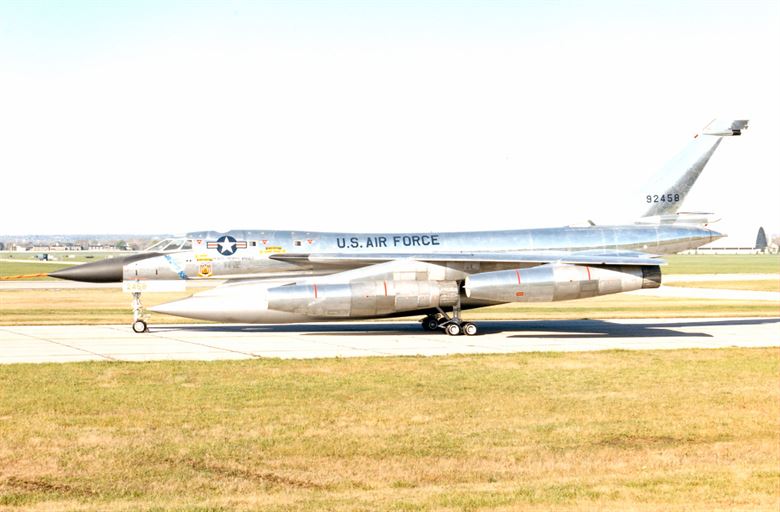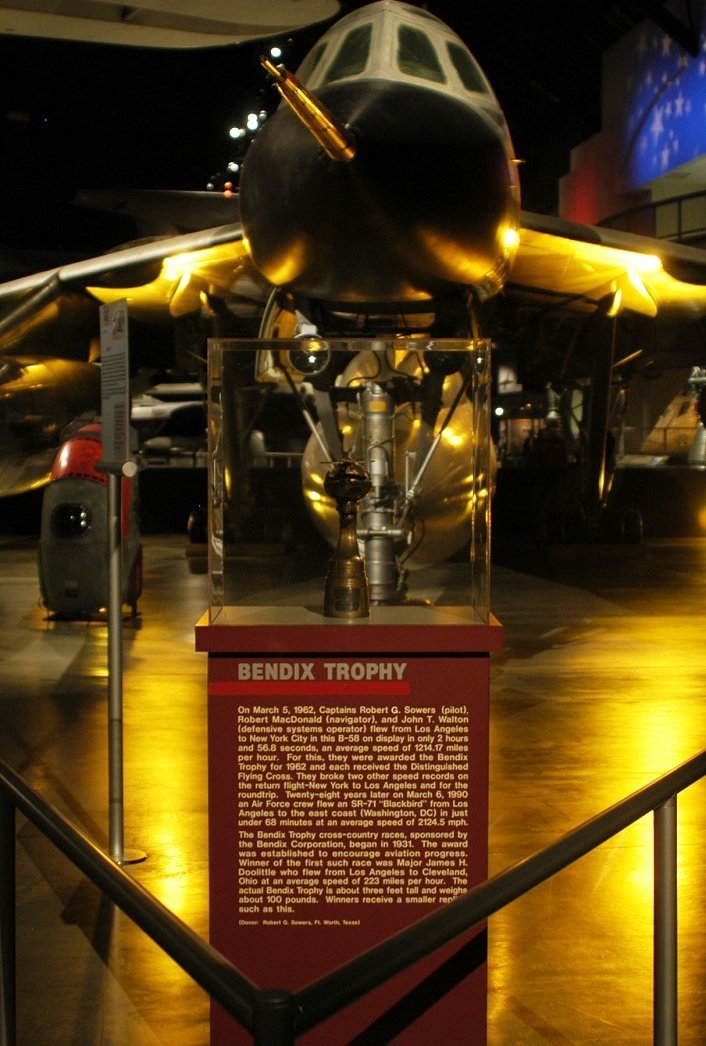On March 5, 1962, Capt. Robert G. Sowers, Robert MacDonald, and John T. Walton, flying in the Hustler, completed the flight from Los Angeles to New York City with an average speed of 1,214.17 mph in about 2 hours 56.8 seconds
The B-58, the first operational supersonic bomber of the United States Air Force, made its maiden flight on November 11, 1956. The Hustler stood out for its sophisticated inertial guidance navigation and bombing system, slim “wasp-waist” fuselage, and significant use of heat-resistant honeycomb sandwich skin panels in the wings and fuselage in addition to its delta wing design. A droppable, two-component pod beneath the fuselage held a nuclear warhead as well as extra fuel, reconnaissance equipment, or other specialized gear because the thin fuselage disallowed carrying explosives internally. A pilot, navigator/bombardier, and defensive systems operator made up the B-58 crew.
Convair produced 116 B-58s, including 30 test and prototype models and 86 operational aircraft. Between 1960 and 1970, hustlers flew for the Strategic Air Command. B-58s set 19 world records for speed and altitude while also taking home five separate aviation trophies.
The photos in this post show B-58A on display at the National Museum of the U.S. Air Force.

In the Hustler on exhibit at the museum, Captain Robert G. Sowers, Robert MacDonald, and John T. Walton flew from Los Angeles to New York City on March 5, 1962, covering the distance in just 2 hours, 56.8 seconds at an average speed of 1,214.17 miles per hour. For this, they each got the Distinguished Flying Cross in 1962 along with the Bendix Trophy. On the return voyage, from New York to Los Angeles, they also set two further speed records.
Twenty-eight years later, on March 6, 1990, an Air Force crew flew in an SR-71 Blackbird with an average speed of 2,124.5 mph from Los Angeles to the east coast (Washington, D.C.).
Beginning in 1931, the Bendix Corp. sponsored cross-country competitions known as the Bendix Trophy. The award was created to promote aviation development. Maj. James H. Doolittle, flew at an average speed of 223 mph from Los Angeles to Cleveland, Ohio, to win the first race of its kind. The Bendix Trophy itself stands about three feet tall and weighs about 100 pounds. Winners get a scaled-down model, like the one in the exhibit next to the B-58.

Photo by U.S. Air Force

